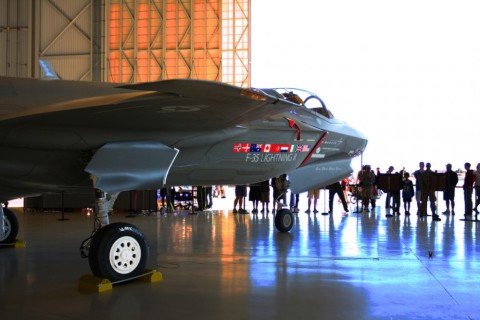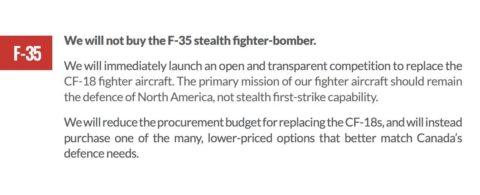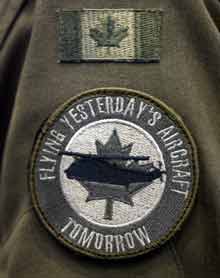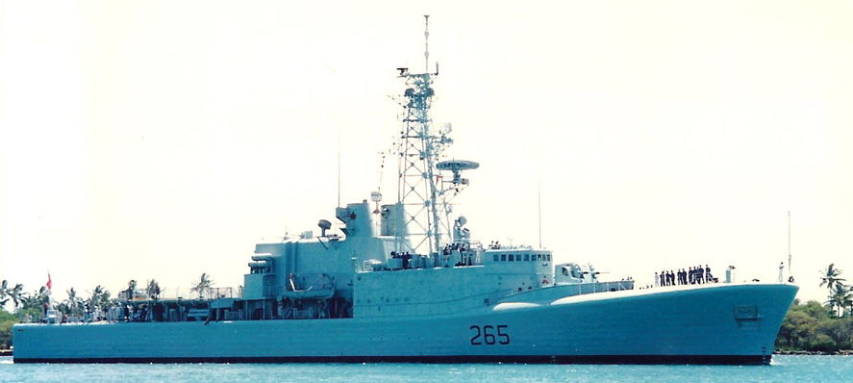Frontline Pros
Published 12 Feb 2022The Type 26 Frigate will become the first dedicated warship Canada has built in decades. Soon the Royal Canadian Navy will take ownership of 15 of these vessels, making them the largest owner of the Type 26 in the world.
(more…)
August 6, 2022
Canada’s New Warship
July 10, 2022
Seven easy steps to fix military procurement
CDR Salamander wrote these for the US military, so some of them are far out-of-scale for tiddlers like the Canadian Armed Forces, but the spirit is still valid and relevant:
1. No weapon system presently under production will be allowed to stop production until its replacement is under production itself.
2. Acknowledge we have lied to ourselves for decades actual magazine requirements in war (use “new” lessons from the Russo-Ukraine War for the tender to save face — whatever works) — and accelerate/restart production of everything from ASW weapons to strike weapons of all types.
3. Acknowledge that we do not have enough weapons — specifically anti-air and land attack — on our warships. Every war proves this and recent experience tells us this.
4. If I take away your access to satellite VOX & DATA and you cannot navigate and fight, you are not a wartime asset and your funding sent somewhere useful.
5. Accelerate capacity for repair away from fleet concentration areas, preferably afloat. Maximize production of sealift and begin the process to replace the C-5M.
6. If your combat unit does not have organic, robust unmanned ISR under the command of your unit’s commander, you are worthless in the war to come and you will have such a capability by FY25 or you will be disestablished.
7. Pass the Salamander Bill: no General of Flag Officer shall, for a period no less than 5-yrs from retirement date, receive compensation of any kind or anything of value from any publicly or privately held company that does business with the federal government, nor shall they serve in any non-paid positions with same.
Yes, #7 is important. If you have not realized why in 2022, you are part of the problem.
March 31, 2022
Canada’s F-35 procurement process — “Dysfunctional, but, like, a masterpiece of dysfunction.”
In The Line, Matt Gurney reveals the embarrassing secret of his life: he has “a favourite Canadian military procurement fiasco”. He’s quite right that there’s a distressingly wide variety of procurement cock-ups to choose from since the 1960s, but in his opinion the F-35 saga is the best:
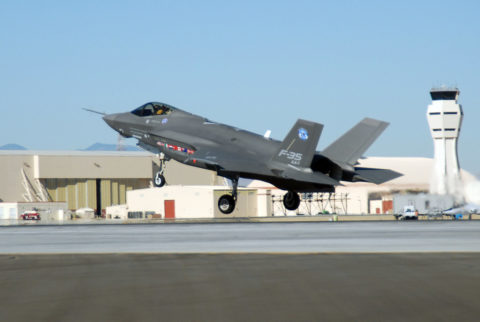
“F-35 Lightning II completes Edwards testing” by MultiplyLeadership is licensed under CC BY 2.0
Having a favourite Canadian military procurement fiasco feels perverse, in a way. It’s like having a favourite gruesome sports injury. Procurement fiascos are bad. We want fewer of them. There’s nothing to be celebrated when yet another one barfs all over the national rug. And yet I find myself indulging a bizarre fondness for a mostly overlooked low point in our long, embarrassing journey to this week’s re-decision to buy a fleet of F-35 fighter jets for the Royal Canadian Air Force. As bad as the low point was — and it was really bad — it also so perfectly summed up our utterly manifest dysfunction that I’ve come to almost admire it. It’s awful, but it’s a pure form of awful. Dysfunctional, but, like, a masterpiece of dysfunction. You couldn’t ask for a better example of what’s wrong with us.
[…]
That wasn’t the original plan; the Liberals first proposed buying 18 new F-18 SuperHornets, the more advanced American successor to the original F-18. That idea fell through due to a trade spat between Canadian darling Bombardier and Boeing, the SuperHornet manufacturer. This was the point of no return: the Boeing dispute was another opportunity for the Liberals to sigh, pop a few Tums and then just do the right thing and proceed with the full replacement as quickly as possible.
They did not. And this, dear readers, is where this embarrassing chapter of our already pathetic history of military procurement reached maximum absurdity.
With our CF-18 fleet at a state of exhaustion, and Boeing in Trudeau’s dog house, instead of actually replacing our old, exhausted jets with new jets, we just gave the air force enough old, exhausted Australian jets so that the RCAF could cobble enough workable jets and spare parts together to allow the Liberals to further delay any decision on a real replacement program.
When you write a lot about military procurement, as I certainly have, you can’t help but grow a bit (!) jaded and cynical. Even by the standards of my appallingly lowered expectations, though, this was an outrageous decision. As I said above, it’s so bad, so cynical, so crassly political, that it has perversely become something I almost admire, in a twisted way. It’s an almost too-brutal-to-be-believed example of politicians dodging accountability and leadership like Keanu bobbing and weaving out of the path of CGI bullets. Every dollar and hour of time we put into scooping up Australia’s leftover jets — they were unneeded because Australia was competent enough to procure more advanced SuperHornets and, ahem, F-35s — was money and time spent not to improve the readiness and capabilities of the Canadian Armed Forces, but to permit the Liberals to avoid acknowledging they’d made a dumb campaign promise.
Stephen Harper failed the Canadian Armed Forces and Canada generally by not getting the ball rolling on a replacement during his majority term. This was a major failure by the Conservatives that they get all awkward and squirmy about when you bring up, but we should bring it up. The CPC botched this, badly, and should feel shame. Justin Trudeau then repeated that failure, and then took it up a level. In this race to the bottom, where no one looks good, Trudeau “wins” by simple virtue of snapping up used jets — the last of which only arrived last spring! — to buy his government time to do absolutely nothing.
March 30, 2022
The RCAF’s long, sad F-35 story
In The Line, Mitch Heimpel tries (without either laughing or crying) to tell the story of how the Canadian government finally got around to admitting they should have bought the F-35 fourteen years ago (when the RCAF told them it was the best fit for our national requirements):
If you’re looking for a simple meta-explanation for all of us, it would be this: Canadian politicians refuse to tell the public one simple truth — military procurement is expensive. There isn’t an inexpensive version of this. That doesn’t mean we should accept any and all costs just because it’s going to be expensive. It does mean that politicians have to stop trying to sell us on there being an inexpensive, or perfect, version of this. There is no MacGyver version of military procurement. No amount of rubber bands and paper clips replaces jet engines and submarines, no matter how many times we pretend it will. Indeed, the longer you delay, the more it’ll cost — the weapons generally get more expensive, and you end up spending more money to wring every last bit of use out of what equipment you already have, instead of replacing it in an efficient, orderly way.
So, let’s recap: We are, in fact, so bad at procurement that we ran a process for years, and then cancelled it. And then pledged not to buy the jets we’d originally pleged to buy. We then bought seven old Australian F-18s so we could keep our elderly and dwindling CF-18 fleet from experiencing a “capability gap” caused mostly by not just buying the F-35 in the first place. Then, almost 12 years after announcing we were going to buy the F-35, after all the drama above, we’ve announced we’ll buy the F-35, after all. Eighty eight of them, in fact. So there’s that, I guess.
In so many ways, the F-35 saga is another symbol of seven years of Trudeau governance. In 2015, the Liberals could not have been more clear in their campaign platform, which included a whole section titled “We will not buy the F-35 stealth bomber-fighter.”
What were Ministers Anand and Tassi out saying when the F-35 announcement was made this week? “Best plane” and “best price.” Which was true in 2008 when we were first told it was the only fighter that met our needs. It was still true when the Harper government blinked in 2012, and still true when Justin Trudeau was accusing the government of “whipping out” our CF-18s while on the opposition benches in 2014. Remained true in 2015 when the Liberals campaigned against it, too, and every year since.
We have no reason to believe that what is supposed to be a $19-billion announcement for 88 planes to begin delivery in 2025 will actually end up being any of those things. Don’t be surprised if we spend more money to get fewer jets at a later date. But we are now well past the point of being able to blame anyone other than ourselves for cost overruns or late deliveries. The Canadian government failed the Royal Canadian Air Force in this procurement. That is beyond dispute. These guys need the planes. They have for years.
Let’s hope we’ve at least been sufficiently embarrassed by this experience to be more serious when we have to talk about submarines, which is now, come to think of it.
But I doubt it.
March 15, 2022
For military procurement blunders, “no nation has mastered the ability to step on every bloody rake quite as well as Canada”
Germany has announced that they will be purchasing US F-35 stealth fighters as part of their re-armament program. My favourite headline on this was over at Blazing Cat Fur: “Germany To Buy 35 Lockheed F-35 Fighter Jets From U.S. Amid Ukraine Crisis … Canada Will Buy Cool ‘Fighter Jet Stickers’ With Eco-Friendly Adhesive”
On a more serious tone — but with sadly the same basic message — Mitch Heimpel looks at the multi-generational rolling catastrophe that is Canadian military procurement since the unification of the forces in 1968:

Browning High Power 9mm, the standard side-arm of the Canadian army since WW2. When I was in the reserves, we were told this was due for replacement in a few years. I was in the reserves from 1976-1980. It still hasn’t been replaced.
To say we have a checkered history with military procurement, fails to capture exactly how bad it is. Our political leadership has failed us continually over the course of half a century. No party has done it well. Some have done it better than others. But no one can claim any kind of bragging rights.
Fighter jet procurement in this country is so fraught it once caused the birth of a new political party. Trying to buy helicopters helped bring down a government. We only successfully bought those helicopters after they [the old helicopters] became a greater danger to the personnel manning them than they were to any potential adversary. We have been running a procurement for the next generation of fighter jets for an entire generation. Even Yes, Minister writers would have given up on something that absurd.
Our submarine fleet seems to be almost permanently in dry dock. Our most recent ship procurement resulted in the absolutely monstrous prosecution of one of the country’s most accomplished military leaders.
And we just issued a revised bid to finally replace our Second World War-era pistols … last week.
Just cataloguing that level of incompetence is exhausting. No leader or party looks good. The civil service, as the one constant through all these cartoonish blunders, surely has to wear some of this, too. The fact that we seem to repeat the same mistakes can, at least in part, be attributed to a significant institutional memory failure on the part of the people trusted with having the institutional memory.
Now, it is worth noting in fairness that no nation has an easy time with large scale military procurement. Ask the Americans about the development of the V-22 sometime. But, still, no nation has mastered the ability to step on every bloody rake quite as well as Canada.
I’m not a hardware expert. I can’t tell you which pistol we should buy. There’s also genuine policy questions here that need to be settled — I don’t know whether we should focus on the navy because we’re an Arctic nation, or the air force because it allows us to participate more readily in allied force projection exercises — like, say, no-fly zones? The necessary mix for Canada is no doubt some of both, and it’s fine to have disagreements between parties on what the right mix is.
But setting that aside, I want to talk about what it would take politically, to get us to start taking procurement seriously — just a few basic rules that any government would need to follow to procure anything that they chose was important for Canada to have.
May 15, 2021
Adventures in military procurement
Back in September, Matt Gurney wrote about the generations-long travesty that is the Canadian government’s procurement system for the Canadian Armed Forces. I missed it at the time, but — this is a shock, I know — it’s still fully accurate and up-to-date, because the government hasn’t done anything to address the blatant failings of the “system”:
Some history first: during the Second World War, Canada manufactured hundreds of thousands of Browning “Hi-Power” 9mm pistols. The pistols were originally made by Belgian manufacturer FN, but Belgium, of course, was overrun by the Nazis early in the war. The schematics and part diagrams were evacuated before the Germans arrived and the pistol saw service in numerous allied militaries. The Canadian army ended up acquiring 60,000 of them, all built in 1944 and 1945. And here’s where things get bonkers: we’ve never replaced them. Some Canadian military units have used more modern pistols, acquired in smaller batches, but the standard sidearm of the Canadian Armed Forces, today, isn’t just the same kind of pistol we used in the Second World War. It’s literally the same pistols.
Reliability issues with the pistols are a chronic problem. I mean, they’re 75 years old, and they’ve been in use continuously. Our military weapons technicians do what they can, and they’ve been stripping some pistols for spare parts to put into other pistols for decades. But the Hi-Powers are in desperate need of a replacement. They’re a generation overdue for replacement. But in keeping with the finest traditions of Canadian military procurement, we can’t get it done. It’s beyond our ability.
We’ve tried, sort of. At the start of 2017, the military began work on a replacement program that would have procured up to 25,000 new 9mm semi-automatic pistols for the Canadian Armed Forces. The military gave itself 10 years to get this accomplished and budgeted $50 million. It’s hard to overstate how crazy that is. Pistols aren’t complicated. If you have a credit card and a firearms licence, you can walk into a store and buy one. A lot of what the military needs is super complex and custom-made. Pistols are easy. There are factories all over the world that are already producing proven, reliable, affordable designs. Buying new pistols has got to be about the simplest procurement any military is ever going to face. And we still thought we’d need 10 years to do it. A decade.
The amazing thing is, by total fluke, in 2016, the British also decided they needed new pistols. And they also decided they needed 25,000 of them. This is entirely coincidental, but it’s a fantastically convenient coincidence: it’s a rare apples-to-apples comparison of two national procurement systems. And how’d it go?
Well, the Brits selected a type of pistol, purchased 25,000 of them and issued them to their military units by 2018. They wrapped the whole thing up in two years. The total cost was $15,000,000.
In Canada, we set a 10-year goal for the same thing, budgeted more than three times as much … but never got it off the ground. No progress was made.
So now, the military is trying again.
When I was in the militia in the late 1970s, we trained with the Browning, although even then we were told it was slated to be replaced within a few years. After thirty-some years of heavy use, the guns were still going strong, but definitely showing significant signs of wear and were probably already at the point they should have been retired even then.
March 17, 2021
Rebuilding the Royal Canadian Navy
I somehow missed this article by Sir Humphrey when he posted it a few weeks back. He’s looking at the Australian and Canadian governments’ respective decisions to use the British Type 26 design to replace their current anti-submarine fleets and considering some of the economic and military concerns that led to the decision.
In both cases there have been media articles in the last week over the programmes and concerns. In Canada, the challenge has been that the cost has grown to a total of $77bn for 15 escorts. There has been cost growth from an originally scheduled $14bn many years ago, and the first of class will not now be delivered until 2031. This has led to suggestions in some media quarters that Canada could do things faster and more cheaply if it simply bought an off the shelf foreign design now and got on with things.
An artist’s rendition of BAE’s Type 26 Global Combat Ship, which was selected as the Canadian Surface Combatant design in 2019, the most recent “largest single expenditure in Canadian government history” (as all major weapon systems purchases tend to be).
(BAE Systems, via Flickr)[…]
The issue now is that Canada will need to establish, almost from scratch, a frigate construction programme and workforce for a finite period of time without a clear plan of what follows on when the last hull is completed. At the same time it will need to run on ships that are becoming increasingly elderly – it is likely that most of the Halifax class will see more than 40 years of service, and some may approach their 50th birthdays before being replaced – something that will pose an increasing maintenance and resource challenge.
Could things be done more cheaply or quickly? Almost certainly yes, but only if you are willing to make massive compromises. It could be possible, for example, to look to licence build an existing design that is already in service. There are plenty of designs out there that could be licence built and brought into service in the next few years — probably at less cost than the T26 programme.
But while this may sound easy, its also a recipe for disaster. It’s easy to look at country X and say “they’re buying this ship for that much” and assume that Canada is getting a bad deal. But Country X is likely to have a very different set of requirements, and their design will reflect it.
For example, Canada needs a ship able to operate with NATO and 5 EYES as a fully integrated player – this adds cost to fit specific systems and equipment that is compatible. Canada will also want to fit bespoke systems to meet national needs – again this will require design changes, that come at a price. Bolting on all manner of different requirements that Canada needs to meet the unique operational circumstances adds price and complexity to the design.
While you probably could take an off the shelf design and build it now, it would be just that, an off the shelf design. It wouldn’t be optimised for local needs, and it wouldn’t have the right equipment, comms, meet local design standards, or be certified for use with national equipment.
You are then faced with two choices – either bring a cheap ship into service that is entirely unsuitable and not designed for your needs, but is a lot cheaper, or spend an enormous amount of money shifting the design to better reflect your needs. If you choose the latter, then suddenly you are adding cost and time in, and the 2031 date will slip even further.
If you choose the former, then you have to accept that the design is “as it comes” and will have minimal Canadian input – so limited industrial offsets, very little economic benefit, and the long-term support solutions will firmly be tied into the country of origin and not Canada. In other words, Canadian taxpayer dollars will be spent to support a foreign economy.
That last point is really the key. Canadian governments, in my lifetime at least, never look at the military requirement as the top priority and sometimes not even the second or third priority. The economic spin-offs, especially in those cases where the benefits can be allocated to marginal parliamentary constituencies, will be the top priority. As is always a talking point in the case of any major military hardware acquisition, this is going to be the “single largest expenditure in Canadian government history”. Just as the replacement of the RCAF’s aged CF-18 fighters will be the largest expenditure in its turn.
March 2, 2021
Warship purchasing is not for the faint-of-heart
Ted Campbell talks about the way the Royal Canadian Navy plans for warship purchases … and how the best-laid plans can be derailed by ignorant political advisors:
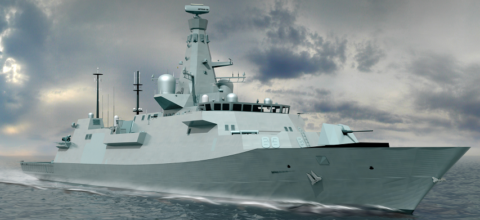
An artist’s rendition of BAE’s Type 26 Global Combat Ship, which was selected as the Canadian Surface Combatant design in 2019, the most recent “largest single expenditure in Canadian government history” (until the RCAF gets their replacement for the CF-18 Hornet).
(BAE Systems, via Flickr)
Once upon time,* about 25 to 30 years ago, in the mid 1990s, when I was the director of a small, very specialized team in National Defence Headquarters (NDHQ) in Ottawa, something like this happened: One of my colleague, who had a title like Director of Maritime Requirements or something similar said to one of his principle subordinates, “Look, now that the 280s (Canada had four Tribal Class destroyers with pennant numbers starting at 280, they were often just called ‘280s’) are finished their mid-life refit and now that the new frigates are entering service it is time to put a ‘placeholder’ in the DSP for their eventual replacements.” The DSP was (still is?) the Defence Services Programme, it is the internal document which sets out the long range spending plans (maybe hopes is a better word) for the Canadian Armed Forces.
Anyway, the Navy commander (the officer assigned to write the document, not the Commander of the Royal Canadian Navy who is nicknamed the Kraken (CRCN)) sat at his desk and consulted the most recently approved planning document which, as far as I can remember, called for a surface fleet of 25 combat vessels and four large support ships plus numerous minor war vessels (like minesweepers) and training vessels. The officer then prepared a memorandum for the joint planning staff which said that the Navy would need 25 new combat ships, to be procured between about 2015 and 2035, in five “batches” of five ships each** at a total cost of about $100 Billion, in 2025 dollars. He didn’t say much beyond that, actually, he was just intending to “reserve” some money a generation or so in the future. His memorandum sailed, smoothly, past his boss and the commodore but questions came from a very senior Air Force general: Where he asked, did the $100 Billion come from? That was an outrageous number, he said.
A meeting ensure where the Navy engineering people came and said, “$100 Billion is a very reasonable guesstimate. Our brand new frigate are costing $1 Billion each when they come down the slipway. They will each have cost the taxpayers two to three times that by the time we send them to be broken up thirty or forty years from now. Adding in the inevitable costs of new technology and inflation, which we know is higher for things like military ships and aircraft than it is for consumer goods, then a life-cycle cost of $4 Billion for each ship is very conservative. The admirals and generals huffed and puffed but they didn’t argue ~ they knew that the engineering branch insisted on using life cycle costing, even though no-one but them understood it, and they also knew that arguing with engineers is like mud-wrestling with pigs: everyone gets dirty but the pigs love it.
A decade later, when a new government was planning the National Shipbuilding Procurement Strategy, which was all about making the Canadian shipbuilding industry competitive and had very little to do with ships ~ except they would be the “product” for which the Government of Canada would pay top-dollar, the Navy was told it could have fewer ships, in two classes, and someone ~ NOT the military’s engineering branch ~ assigned a cost figure to the project which was, to be charitable, pulled out of some political/public relations staffer’s arse.
[…]
* The story is true, in general, but I was not directly involved in any of it. I learned about what happened from three main sources: 1. routine briefings that my bosses (directors-general and branch chiefs) gave, regularly, to we directors, dealing with what was going on in the HQ and in the big wide world; 2. periodic chats with my colleagues, after work on Friday afternoons, in the bar of the Officers’ Mess ~ many of us regarded 2. as a more reliable source of information than 1.; and 3. in the case of the story about the Navy engineers and the Air Force general, by a friend and colleague who was in the room.
** The idea, long before the National Shipbuilding Strategy, was to keep shipyards moderately busy on a continuous basis. The 25 ships would all be similar: the first “batch” of five would be identical, one to the other; the second “batch” would be very similar but with some improvements; the five ships of batch 3 would be similar to the ships from the second batch and those from batch 4 would be rather like their batch 3 sisters. Finally, the batch 5 ships would be product improved versions of batch 4 ~ they would still be “sisters” of the batch 1 ships, but not, in any way, twins. The idea was that about the time that the batch 5 ships were being delivered the first of the batch 1 ships would be getting ready for a mid-life refit (after 15 to 20 years of service) which would result in it being much more like the batch 5 ships … and so on.
June 27, 2020
QotD: The cost of military equipment
Major military hardware is produced in only limited quantities and involves a massive amount of research, development, and engineering before the first unit goes into service. Because of this, the companies that build it are rarely willing to take the risk of paying for the development themselves and recovering the cost from the units that they sell. What if the customer suddenly decides to cut their buy in half? To avoid this problem, development is paid for by the customer separately from procurement of each item. Well, more or less. The actual answer varies with each particular system, accounting method, and time of the month. But in general, costs break down that way.
So why does this cause so much confusion? Well, it all has to do with what gets reported. Someone who is trying to make the case that some program is outrageously expensive and should be cancelled is going to lump together development and procurement, divide by the number of systems involved, and then publish the resulting number. But, particularly when we’re discussing the cost of a system about to enter production, that’s very different from the actual numbers. To give a well-known example, the B-2 is generally reputed to have cost about $2 billion/plane in the 90s. However, this is the total program cost divided by the 21 airframes. If we’d decided to buy 22 B-2s instead of the 21 we did buy, the extra plane would have cost only $700 million or so. Admittedly, the B-2 is a rather extreme case, and usually the share of R&D cost is less than the procurement (flyaway) cost, but it’s illustrative of the power of this kind of framing.
“bean”, “Military Procurement – Pricing”, Naval Gazing, 2018-03-09.
August 5, 2019
How Boeing lost its mojo
Rafe Champion linked to this interesting thumbnail-sketch history of the decline and fall of Boeing:
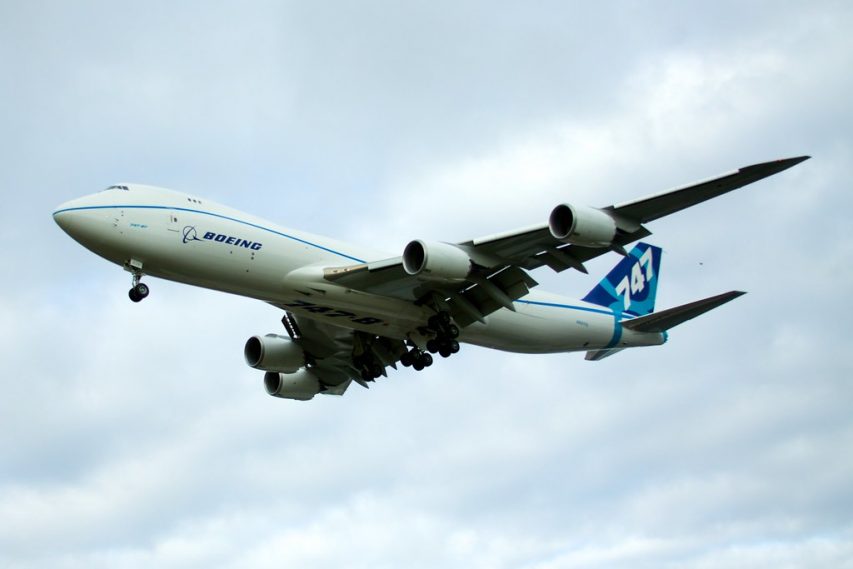
“Boeing 521 427”by pmbell64 is licensed under CC BY-SA 2.0
Let’s start by admiring the company that was Boeing, so we can know what has been lost. As one journalist put it in 2000, “Boeing has always been less a business than an association of engineers devoted to building amazing flying machines.”
For the bulk of the 20th century, Boeing made miracles. Its engineers designed the B-52 in a weekend, bet the company on the 707, and built the 747 despite deep observer skepticism. The 737 started coming off the assembly line in 1967, and it was such a good design it was still the company’s top moneymaker thirty years later.
How did Boeing make miracles in civilian aircraft? In short, the the civilian engineers were in charge. And it fell apart because the company, due to a merger, killed its engineering-first culture.
What Happened?
In 1993, Clinton’s Deputy Secretary of Defense, Bill Perry, called defense contractor CEOs to a dinner, nicknamed “the last supper.” He told them to merge with each other so as, in the classic excuse used by monopolists, to find efficiencies in their businesses. The rationale was that post-Cold War era military spending reductions demanded a leaner defense base. In reality, Perry had been a long-time mergers and acquisitions investment banker working with industry ally Norm Augustine, the eventual CEO of Lockheed Martin.
Perry was so aggressive about encouraging mergers that he put together an accounting scheme to have the Pentagon itself pay merger costs, which resulted in a bevy of consolidation among contractors and subcontractors. In 1997, Boeing, with both a commercial and military division, ended up buying McDonnell Douglas, a major aerospace company and competitor. With this purchase, the airline market radically consolidated.
Unlike Boeing, McDonnell Douglas was run by financiers rather than engineers. And though Boeing was the buyer, McDonnell Douglas executives somehow took power in what analysts started calling a “reverse takeover.” The joke in Seattle was, “McDonnell Douglas bought Boeing with Boeing’s money.”
[…]
The key corporate protection that had protected Boeing engineering culture was a wall inside the company between the civilian division and military divisions. This wall was designed to prevent the military procurement process from corrupting civilian aviation. As aerospace engineers Pierre Sprey and Chuck Spinney noted, military procurement and engineering created a corrupt design process, with unnecessary complexity, poor safety standards, “wishful thinking projections” on performance, and so forth. Military contractors subcontract based on political concerns, not engineering ones. If contractors need to influence a Senator from Montana, they will place production of a component in Montana, even if no one in the state can do the work.
June 27, 2019
$26B, $56B, $70B, and pretty soon you’re talking real money
The headline refers to the constant upward movement of various estimates on how much the Canadian government will be required to spend on the Canadian Surface Combatant program. In shorthand, that’s the money required to replace the Royal Canadian Navy’s current fleet of 12 frigates and the Iroquois-class destroyers that have already been retired from service. The Halifax-class frigates began entering service in the early 1990s and were designed to operate for about thirty years, meaning the RCN needs replacements to start coming into the fleet in the mid-2020s. The government initially budgeted around $26B for fifteen ships in 2008, but as with so many military equipment programs, no actual steel has been cut to begin building the new ships … in fact the design was only formally agreed in October 2018 and not signed (due to a lawsuit from one of the losing bidders) until February of this year. We’re still probably 2-3 years away from construction of the first ship in the class beginning, which will mean the Halifax class will have to remain on duty for longer (and older ships require more frequent and more expensive maintenance).
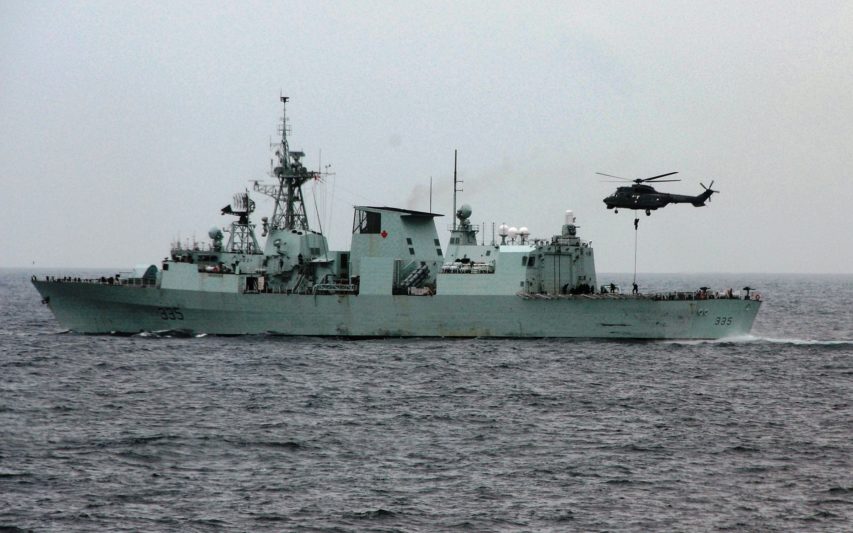
A Chilean navy boarding team fast-ropes onto the flight deck of RCN Halifax-class frigate HMCS Calgary (FFH 335) during multinational training exercise Fuerzas Aliadas PANAMAX 2009.
US Navy photo via Wikimedia.
The Department of National Defence most recently estimated up to a $60B final bill, but the Parliamentary Budget Office estimate was $70B (an increase of $8B over a two-year span), and there’s no reason to assume that things will magically get cheaper between now and whenever Irving Shipbuilding starts construction of the first new ship. David Pugliese reports:
… it could be years before the real cost to taxpayers for the mega-project is actually known as the project is just getting started.
The PBO report warned that any delays in building the first ship will be costly. A delay of one year, for instance, could increase costs by almost $2.2 billion, it added.
The federal government hopes to begin building the ships starting in the early 2020s.
Pat Finn, the head of procurement at DND, said the PBO estimates largely align with what the department figures as the cost of the program. He noted that unlike the PBO, the department does not consider tax in its cost figures. That is because those fees ultimately go back to the federal treasury.
But he also agreed with the PBO on the concern about added cost if the project is delayed. “That is a key one for us. It’s something we’re watching carefully,” said Finn, assistant deputy minister for materiel.
The CSC program is currently in the development phase. The government projects the acquisition phase to begin in the early 2020s with deliveries to begin in the mid-2020s. The delivery of the 15th ship, slated for the late 2040s, will mark the end of that project.
The Liberal government announced in February that it had entered into a contract with Irving Shipbuilding to acquire new warships based on the Type 26 design being built in the United Kingdom. With Canada ordering 15 of the warships, the Royal Canadian Navy will be the number one user of the Type 26 in the world.
The United Kingdom had planned to buy 13 of the ships but cut that down to eight. Australia plans to buy nine of the vessels designed by BAE of the United Kingdom.
The entry of the BAE Type 26 warship in the Canadian competition was controversial from the start and sparked complaints the procurement process was skewed to favour that vessel. Previously the Liberal government had said only mature existing designs or designs of ships already in service with other navies would be accepted, on the grounds they could be built faster and would be less risky. Unproven designs can face challenges as problems are found once the vessel is in the water and operating.
But the requirement for a mature design was changed and the government and Irving accepted the BAE design, though at the time it existed only on the drawing board. Construction began on the first Type 26 frigate in the summer of 2017 for Britain’s Royal Navy, but it has not yet been completed. Company claims about what the Type 26 ship can do, including how fast it can go, are based on simulations or projections.
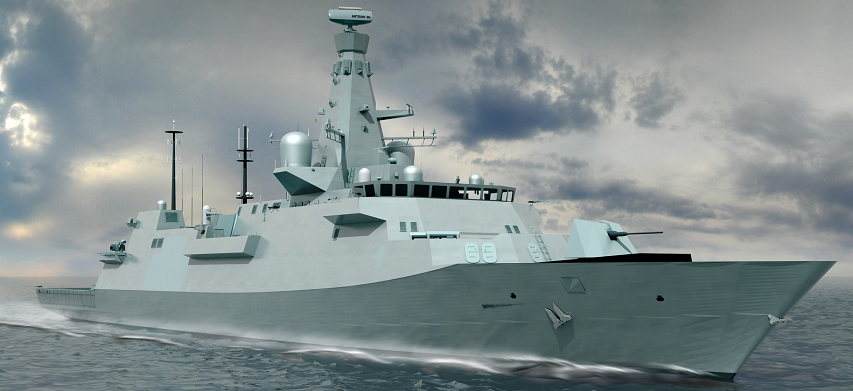
BAE Systems released this artist’s rendition of the Type 26 Global Combat Ship in 2017, which is the design selected by the Canadian government for the Canadian Surface Combatant program.
(BAE Systems, via Flickr)
Ted Campbell commented on the report:
I’m not sure the new ($70 Billion) figure is a terribly useful number for taxpayers like you or me or for policymakers, either. I’m not convinced that DND, itself, much less the whole of government, including the PBO, has a common, coherent understanding of “life-cycle costs,” and I’m damned sure neither the media nor 99.99% of Canadians has one. I’m glad to see that the government includes “the cost of project development, production of the ships, two years of spare parts and ammunition, training, government program management, upgrades to existing facilities, and applicable taxes” but that’s just the tip of the iceberg. These ships are going to be in service for 35± years and they are going to cost money to own and operate every hour of every day and I hope someone is programming ongoing costs (running costs, routine maintenance, upgrades and refits and life extension projects and even disposal) into the long term defence budget guesstimates.
Good management says that the DND budget should be pretty well fixed for the next year or two, fairly firm (even allowing for a change in government) for four or five years beyond the end of the next fiscal year it should be and a reliable planning guide for the next decade or even two. In other words, DND should have a pretty good idea about what it will cost to operate itself, pretty much as it is now, for a generation. I expect (hope, anyway) that defence planners have a “Christmas wish list” of capabilities they want to add or improve/increase (with costs attached) should a defence friendly government ever materialize in Canada or, sadly but more likely when, not if, the need arises.
He also points out the hidden truism about huge government purchases:
… from 1950 to 1958 the several hundred Canadair F-86 Sabre jets that Canada bought for the RCAF was, probably, “the largest single expenditure in Canadian government history,” then from the early 1950s until 1964 the production of 20 destroyers (DDE and DDH) of the St Laurent, Restigouche, Mackenzie and Annapolis classes (all based on one, baseline, design) was, almost certainly, “the largest single expenditure in Canadian government history,” and I know for a fact that the purchase decision (in 1980) of 138 CF-18 Hornets made it “the largest single expenditure in Canadian government history.” The simple fact is that the costs of high-tech aircraft, howitzers, tanks, radios and, especially, ships, keep climbing far faster than inflation and if, as we must, we want our armed forces to be adequately equipped then we need to accept higher costs … especially if we want to build ships in Canadian yards, employing Canadian workers.
May 13, 2019
The political persecution of Vice-Admiral Norman
Conrad Black on the recently stayed prosecution of the former Vice-Chief of the Defence Staff, Vice-Admiral Mark Norman:
The RCMP, the same Palooka force that brought us the ghastly fiasco of the trial and resounding acquittal of Senator Mike Duffy, alleged that Vice Adm. Norman was the source of press leaks, and searched his house with a warrant in January 2017, a fact that was also mysteriously leaked to the press. He was suspended with full pay, and finally, in March of 2018, he was charged with a criminal breach of trust. The government barred him from the benefit of the loan of money for legal fees to accused government employees pending judgment, a capricious attempt to starve him into surrender.
Neither the media, usually pretty quick to jump on the back of any defendant, nor any other serious observers, believed the defendant, who started in the navy as a diesel mechanic and rose for 33 years to commander of the fleet and then serve as vice-chief of the defence staff, would do such a thing, or that the RCMP had any real evidence. It didn’t, inciting the suspicion that the Mounties, if they can’t raise their game, should stick to musical rides and selling ginger ale, and reinforcing the view that the Armed Forces should be funded properly, and not just in phony announcements every few years of naval construction and army and air force procurement programs that don’t happen. And It is, in any case unacceptable that police corporals get warrants to search the home of the second highest military officer in the country on grounds that are eventually shown to be unfounded.
It appears to be clear that exculpatory evidence was withheld by the prosecutors, deliberately or otherwise. Outgoing Liberal MP and parliamentary secretary Lt. Gen. (Rt.) Andrew Leslie (a grandson of two former defence ministers, Gen. Andrew McNaughton and Brooke Claxton), had announced he would testify on behalf of Vice Adm. Norman. The prime minister ducked out of question period for two days as this contemptible abuse of prosecution collapsed. Instead, he should, if conscientiously possible, have blamed it on the former attorney general, Jody Wilson-Raybould. That would have been believable, given some of her other antics in that office.
If he can’t do that, then this rotten egg falls on him and could be a politically mortal blow. The SNC-Lavalin affair was an attempt to save jobs in Canada and avoid over-penalization of a successful international company where there is a legal right for the justice department to choose between a fine and criminal prosecution. It was bungled, a ludicrous amateur hour that brought down senior civil servants and led to expulsions of ex-cabinet ministers as Liberal MPs, but it was not a show-stopper unless the prime minister lied to Parliament.
This appears to be a malicious and illegal prosecution of a blameless senior serving officer, who fought his corner as a brave man must. If that is what it is, heads should roll, not of scapegoats, token juniors, or fall-guys, but of those responsible for this outrage.
May 1, 2019
Feds impose media ban on companies taking part in “the largest single outlay of tax dollars in Canadian history”
Ted Campbell understands that governments need to keep some information secret (like the capability of weapon systems or details of naval radar implementations), but that our current federal government is going far beyond any reasonable definition of secrecy:

Type 26 Global Combat Ship — selected as the Canadian Surface Combatant program’s design winner.
(BAE Systems, via Flickr)
But, that sort of really SECRET stuff aside, we, citizens, do have a right to know how the government is spending our money and that, in my opinion, includes understanding “details about the industrial benefits and jobs supposedly to be created by the surface combatant project.” After all, it was our government, the Harper Conservative government to be clear, that selected, in that case, Irving Shipbuilding (Halifax) to be the supplier of new destroyer-frigate type warships, and they did so after what was described in a 2010 press release by then Public Works and Government Services Minister Rona Ambrose as developing a
Strategy [that] promotes the regional distribution of work and opportunities to shipyards across the country. Shipyards that are selected to build the combat and non-combat packages will have to subcontract vast amounts of work to the broader marine industry and suppliers of this industry. Subcontracting in any of the three streams encompassed by the Strategy will be of notable benefit small and medium enterprises … [and] … The Government of Canada is committed to getting the best value for Canadian taxpayers. Under the Strategy, shipbuilding projects that are similar in nature will be grouped together to reduce production costs. This type of strategic sourcing will create the conditions for the effective and efficient delivery and support of the federal fleet over the long term.
That’s all pretty good stuff and I’m pretty sure that most Liberal ministers are still toeing that same line today. They promised industrial benefits and jobs; we, taxpayers, have a right to know if they are delivering.
But, in an article in the National Post, defence correspondent David Pugliese tells us that
The Liberal government has brought in yet another media ban, this time affecting companies seeking work on a warship project that involves the largest single outlay of tax dollars in Canadian history … [in this case] … In a new directive, firms interested in maintenance work on the $60 billion Canadian Surface Combatant program have been told they can’t talk to journalists and instead must refer all inquiries to Public Services and Procurement Canada … [and] … At the same time, a public interest researcher who is seeking details about the industrial benefits and jobs supposedly to be created by the surface combatant project has been informed by government it will take at least three and a half years to get any such documents under the Access to Information law.
Mr Pugliese says, and these are two very worrying points, that:
- The media ban imposed by Procurement Canada on firms interested in maintenance work on that fleet is the fifth such order in the last year involving the purchase of military equipment or ships, according to documents compiled by Postmedia; and
- Industry representatives have sent the news organization the documents, warning about the growing secrecy at Procurement Canada. The records include a ban on firms talking to journalists about the Canadian Surface Combatants, the purchase of next generation fighter jets, a light icebreaker, a Defence department satellite, as well as a military pilot training contract. Industry executives point out the secrecy is not based on security concerns but on worries the news media will be able to use the information to keep close tabs on the problem-plagued military procurement system.
The Trudeau regime seems obsessed with secrecy and wants to bend all factual information to suit its narrative that it is spending our money as we might wish … which is, of course exactly what the Trudeau campaign said about Prime Minister Stephen Harper
September 23, 2018
The Nimrod MRA4 – the world’s most expensive bad aircraft
Back in 2011, I posted an article about the retirement of the Hawker Siddeley Nimrod from the Royal Air Force inventory. I referred to the Nimrod as
… expensive to buy, eye-wateringly expensive to upgrade, but it must be cheap to operate, right? No:
[…] our new fleet of refurbished De Havilland Comet subhunters (sorry, “Nimrod MRA4s”) will cost at least £700m a year to operate. If we put the whole Nimrod force on the scrapheap for which they are so long overdue right now, by the year 2019 we will have saved […] £7bn
The Register certainly got in the right ballpark with this helpful graphic:
Earlier this month, the Nimrod saga was detailed at Naval Gazing, if only as a way to show that someone can have worse procurement experiences than the United States military. Despite being a military development of a passenger jet famous for crashes, the initial marks of the Nimrod were able to meet the RAF’s needs. The problems began when a requirement was generated for a British AWACS aircraft and the Nimrod was deemed to be the best candidate for conversion (“best” probably meaning “only British competitor”):
Things began to go wrong in the mid-70s, when the British decided to introduce an AWACS aircraft to support their air defense efforts. They had several options. The E-2 Hawkeye and E-3 Sentry were both about to enter service, and were rapidly proving themselves to have excellent radar systems during trials. The British could have had either aircraft, or bought their radar systems to integrate into an aircraft of their own. Or they could have only bought a few subcomponents, like the antenna or the radar transmitter itself, and built the rest domestically.
They decided to take none of these options. Instead, they would produce an entirely new radar system. Instead of an American-style radome, separate antennas would be installed in the nose and tail, and the system would sweep through one, and then the other. This was far more expensive and much riskier than buying from the Americans, but it did produce a lot more jobs in the British defense industry, which was apparently the government’s prime concern. In 1977, a contract was placed, making BAE and GEC-Marconi co-leads on the project to convert 11 surplus Nimrod MR1 airframes to the new configuration.
As might be expected based on that kind of decision-making, the resulting airplane had problems. The computer system chosen wasn’t powerful enough to integrate all of the data, particularly the area where the nose and tail radars overlapped. It was also horribly unreliable, with a mean time between failures of only two hours, in a system which took 2.5 hours to load the mission data from the tape. The Nimrod, considerably smaller than the American Sentry, was unable to carry more equipment to solve this problem. Different electronics racks were earthed to different points in the airframe, and the resulting potential differences caused false tracks to appear, overloading the computer even more. To make matters worse, most of the electronics units weren’t interchangeable for reasons that were never entirely clear. If one unit failed, several spares had to be tried before one that worked was found. The only system that functioned reliably was the IFF system, which could only track friendly aircraft and airliners. This was a major handicap in an aircraft intended to detect incoming Soviet bombers.
It probably isn’t a surprise to hear that the planes were delayed. A lot. And delaying military projects tends to drive the overall price higher. What was anticipated to be a £200-300 million project was over £1 billion before the government of the day came to their fiscal senses and pulled the plug (they ended up buying Boeing E-3 Sentry aircraft instead).
A few years later, the RAF ran a competition to replace the Nimrod MR2 maritime patrol aircraft. Lockheed, Dassault and Airbus entered the competition, but somehow, the RAF ended up selecting BAE’s bid which involved rebuilding 30-year-old Nimrod frames with new electronics and all the modern conveniences.

RAF Nimrod MRA4 on 18 July 2009.
Detail of original photo by Ronnie Macdonald, via Wikimedia Commons.
In 1996, a contract was issued for the new aircraft, designated Nimrod MRA4. 21 aircraft were to be produced at a cost of £2.8 billion, and they would be essentially new airplanes, with only the fuselage structure being retained. The antique Spey engines would be replaced with modern BR700s. These engines were significantly larger, and required much more air, forcing BAE to design a new, larger wing. The combined effect of these two changes was to double the Nimrod’s range and improve performance. Inside, the flight deck was replaced with one derived from the A340 airliner, and the mission systems were to be all-new.
A fuselage was sent to be reverse-engineered for the design of the new wing, and BAE designed and built it, then pulled in another aircraft to make the modification. And discovered that the wing didn’t fit. Apparently, the problem dated back to the initial construction of the aircraft. When positioning the frames, Hawker Siddeley had not done what all sensible manufacturers did, and measured from a common baseline. Instead, they had positioned each frame with a tolerance relative to the previous one, which meant that the position of the wings varied by as much as a foot across the fleet. Worse, the aircraft they had designed the wings for was one of the most extreme in wing position, so the new wings didn’t fit most of the other aircraft. This forced a redesign of the wings, further delaying the program.
Spoiler: they missed their delivery deadline. By nearly a decade. And the original plan to build 21 aircraft shrank to only 4 … but the budget continued to grow, from the original £2.8 billion to over £4.1 billion at cancellation. Each of the surviving airframes had literally cost more than £1 billion. That’s why Bean gave the Nimrod his “Naval Gazing Worst Procurement Ever” trophy, and I think it was very well-deserved.
January 16, 2018
Yet another money squeeze for Britain’s military
At the Thin Pinstriped Line, Sir Humphrey outlines the difficult financial position the British Ministry of Defence (MOD) finds itself in and the very limited options available for the decision makers to choose among:
The Times has broken details of the planned cuts put forward by the MOD to meet the likely scale of budget cuts needed under the ongoing national Security Review being conducted in the Cabinet Office. The planned cuts as leaked to the Times highlight the sheer scale of the challenge facing the MOD at the moment, and seem to resort to many of the ‘greatest hits’ intended to arouse strong opposition, such as ‘merging the Parachute Regiment and Royal Marines’ option.
It is indicated that the Prime Minister has opposed the measures put forward, and that this in turn will lead to a full blown Strategic Defence and Security Review [SDSR], which will look again at force structures and outputs, and hopefully deliver a more balanced force in due course. The challenge is doing this against a budget which reportedly is £20bn in debt, with no meaningful way to find savings without serious pain.
[…]
The difficulty then for Defence is conducting an SDSR in a world where politicians seem unsure as to what their ambition is for the UK in the next 5-10 years, and whether they want to find the money to do this or not. There is probably strong political support for the idea of maritime and air power, both of which can easily be deployed (and recovered) discretely and with no long-term entanglements. It is reasonable to assume that the RN and RAF have a compelling case that they should receive the lions share of investment in the review.
By contrast the Army will find itself facing a difficult time – it is telling that all three options presented in the Times focused on a major loss of Army manpower, and capability reduction. What is also likely is the wider impact of further delays in procurement and reduction of exercises, training and other tools essential to keeping the Army credible. As its vehicle fleet ages, and with almost all of its primary weapon systems verging on becoming near obsolete, politicians face a difficult choice – do they continue to direct funding into high end high capability ground equipment, or do they take the ‘UOR [Urgent Operational Requirement] it on the day’ option of reducing the size of the Army and hope that come the next long-term ground operation, there is enough time to sort a round of UOR purchases out to equip people to the right standard.
At its heart though is the difficulty that the UK seems pathologically incapable of taking and sticking to credible long-term plans on defence and seeing them through to fruition. Strategic now seems to mean ‘two-year horizon’ at best, and there is a real sense that for all the glossy PowerPoint slides and publications, it is a department in a perpetual state of crisis as it struggles to afford the equipment needed to do the tasks asked of it.
This cycle of unaffordability is not new, in fact it seems never ending. There is an occasional period of a few years when things seem a bit better, but then another thing goes wrong and the Department is back to square one. Part of this problem lies in an eternally optimistic set of planning assumptions, coupled with such regular turn over of staff that no one ever has to see through the impact of their work.
The other problem is that rather than bite the bullet, take some incredibly tough decisions and wholesale withdrawal from commitments and capability, the Department lurches on, occasionally being bailed out by some deal that finds a few extra quid to just about see it through. What isn’t happening is systematic and thorough reforms to really grip and address the problems that the Department has got to stop them cropping up time and time again.
At some point the UK must have a serious policy discussion about what it really wants from its defence and national security capability. Does it want to seriously fund it, at a time of economic challenge and government austerity, or does it want to scale back ambition in order to find funding for other national projects? This conversation will not happen though in any meaningful sense, and instead the debate will be shallow, superficial and focus on numbers not outputs and leaked papers warning of an inability to defend the UK if something is cut.
It is all very well having an SDSR again (the third in 8 years), but unless there is a real change in behaviours, there will simply be another one in a couple of years’ time when the new plan proves unaffordable and unworkable. We cannot go on like this indefinitely.

